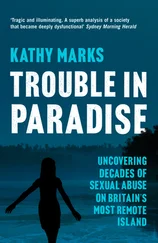Anthropologists draw a distinction between what they call temperance and non-temperance cultures, suggesting a link between people’s behaviour and their belief that alcohol contains some dark diabolical force. In 1889, the English journalist George Sims, an advocate of the temperance movement, wrote about the appalling living conditions that drove the poor to alcohol. ‘The drink dulls every sense of shame,’ he said, ‘and reduces them to the level of brutes.’ A century later, heavy metal rocker Ozzy Osbourne recorded these lyrics on his album No Rest For The Wicked :
I’ll watch you lose control,
Consume your very soul.
I’ll introduce myself today,
I’m the demon alcohol.
In Britain, a country that has long questioned the moral status of alcohol, drinking has traditionally taken place in enclosed bars, with opaque windows and solid doors often adorned with details of the strict licence operating within. Cross the threshold and the rules change. In southern Europe, drink enjoys a very different status — unremarkable and morally neutral. Bars are open and drinking is highly visible, spilling into and merging with everyday life. As one academic study of drinking habits in Madrid put it, ‘the consumption of alcohol is [as] integrated into common behaviours as sleeping or eating.’
Britain’s relationship with booze has been described as an ‘intoxication culture’: while controlling alcohol more strictly, we are more accepting of drunkenness. Although the UK courts operate on the principle that drunkenness is no excuse for criminal behaviour, even more fundamental to the common law tradition is that there must be criminal intent as well as a criminal act. If it can be argued that intoxication affected the capacity of the accused to form criminal intent, judges may rule that being drunk reduced the crime.
For instance, a 2005 Court of Appeal judgment against a murder conviction stated, ‘if the defendant… claims to be so intoxicated that he is experiencing hallucinations and imagines that he is fighting giant snakes then he can be guilty only of manslaughter.’
The Canadian Supreme Court wrestled with a similar issue in the 1990s when considering a sexual assault in which the 65-year-old victim was in a wheelchair and the 72-year-old perpetrator was blind drunk. The judges emerged with the concept of drunken automatism, ruling that extreme drunkenness could be a defence. Such was the political furore that followed, however, that Parliament passed a new law declaring intoxicated violence to be a breach of the standard of reasonable care that Canadians owe each other.
A Home Office research study in 2003 concluded that, for many young Britons, fighting while drunk was seen to be an inevitable fact of life. The report quotes a young woman saying: ‘I have a drink and I just want to fight anyone.’ A young man agrees: ‘It is part of the way of life. It is part of our heritage. Like football matches, you always get a fight at the end.’ Another says: ‘Everybody does it, it is the way the world is.’
But is it? Are Britain’s booze habits so engrained within our psyche that it is hopeless to imagine we could ever import a culture of family-friendly cafe-style drinking? Indeed, might our troublesome lager-lout habits spread to infect other countries? That was certainly the view of the Oxford-based Social Issues Research Centre (SIRC), which in 2000 presented a detailed report to the European Commission warning that economic and political convergence would almost certainly result in ‘a shift towards the negative beliefs and expectations associated with problematic drinking’. The report pointed out that, in some parts of Europe, it was already happening.
In Spain, for example, young local males were found to have adopted the antisocial behaviour of beer-swilling British holiday-makers. Italian youth were also said to be adopting ‘alien’ drinking patterns. It was not as simple as wine versus lager, the report was quick to point out. ‘This has nothing to do with any intrinsic properties of the beverages themselves — beer, for example, may be associated with disorderly behaviour in some cultures or subcultures and with benign sociability in others.’
The European Commissioners were urged to introduce immediate and continuous monitoring of shifts and changes in mainstream European drinking habits. Cultural convergence, they were warned, had ‘not been accompanied by an adoption of the more harmonious behaviour and attitudes associated with wine-drinking cultures’. In other words, it appeared that Britain’s bad behaviour was spreading south rather than cafe culture moving north. The real danger was that government responses would make matters much worse.
Professor Dwight Heath, an American anthropologist and one of the foremost experts on alcohol’s place within different cultures, has been railing against the ‘myths’ that have underpinned social policy for decades — not least the common view that the way to reduce problematic alcohol-induced behaviour is to reduce consumption of alcohol.
In an essay entitled ‘Flawed policies from flawed premises: pseudo-science about alcohol and drugs’, he explained how the intellectual cornerstone justifying government policies to control the availability of alcohol was a report from a meeting of scientists held in Finland in 1975. They had been studying death from liver cirrhosis in different countries and found, unsurprisingly perhaps, that the amount people drink has a bearing on their health.
This link between liver disease and alcohol consumption morphed into a more general assertion that if you reduce the amount people drink, you will reduce all alcohol-induced harms. And yet, when Professor Heath checked with some of the experts who had gathered in Finland, he found that that is not what they had been suggesting at all. Four of the original panel subsequently published a paper asserting that there were actually very few links between the amount people drink and the incidence of social problems. In fact, they went even further, arguing that the correlations between consumption and antisocial behaviour were ‘frequently negligible or negative’.
The science justifying alcohol control was as thin as the head on a pint of light ale and yet it became the foundation upon which policies at the United Nations, in the United States and Europe were based. Professor Heath wondered why it was that the ‘cautious and nuanced conclusions’ from the Finnish forum were converted into a ‘dogmatic and slanted’ guide to global policy-making. ‘When the Director General of the World Health Organization (in 1978) asserted unequivocally that “any reduction in per capita consumption will be attended by a significant decrease in alcohol-related problems” too many journalists, bureaucrats, and other non-specialists unquestioningly accepted that apparently authoritative judgement,’ Heath wrote.
So how should politicians respond to the apparent spread of British ‘intoxication culture’? The advice to Europe’s leaders from social scientists and anthropologists seems to be that the ‘control’ model is counter-productive and they would be much better basing policy on a ‘socio-cultural’ model instead. As the authors of the SIRC report put it: ‘A new approach is required, based on the recognition that different European cultures have different levels and kinds of alcohol-related problems, that these problems are directly related to specific patterns of beliefs and expectations and that measures designed to preserve and promote more positive beliefs are most likely to be effective.’ The experts had a clear message for Britain: what matters is not what you drink but what you think.
The British government did introduce more relaxed licensing laws and, despite all the dire warnings of social collapse, analysis later suggested drinking patterns and behaviour barely changed. People scratched their heads and wondered why. No one thought to question whether the central assumption, the driving force behind our nation’s relationship with alcohol, might be built on a fundamental misunderstanding.
Читать дальше












